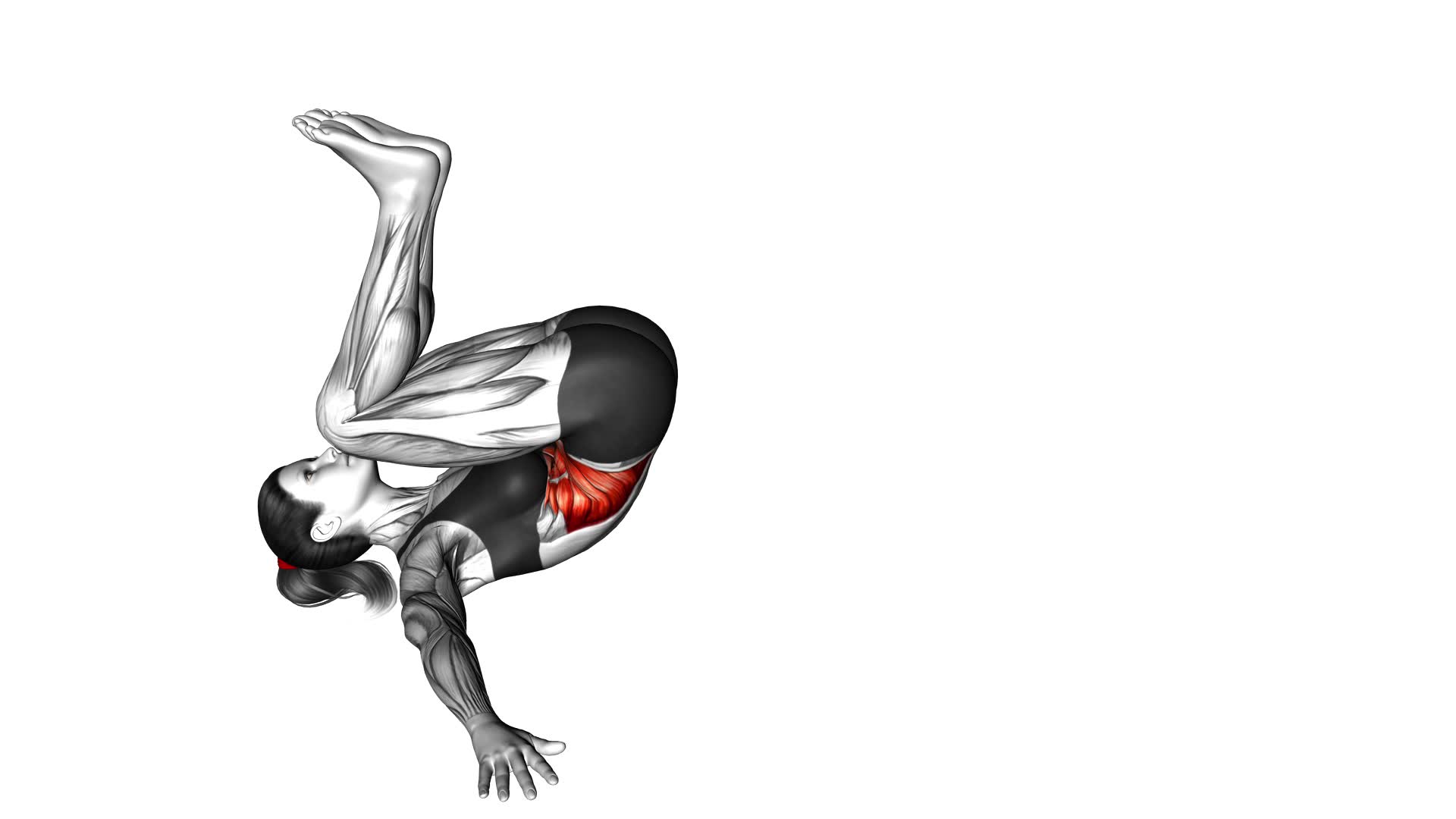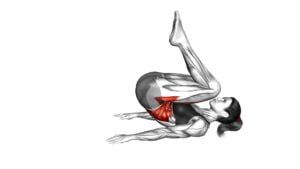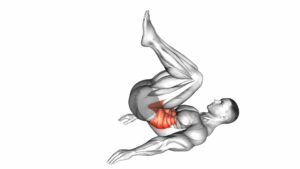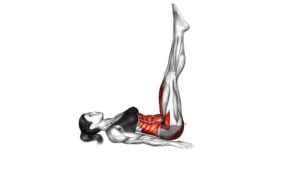Hip Raise (Bent Knee) (Female) – Video Exercise Guide & Tips

Looking to tone your lower body? Try the hip raise (bent knee) exercise! In this video exercise guide, we'll show you proper form and technique to get the most out of this workout.
Watch This Exercise Video
With variations and progressions, you can tailor it to your fitness level. Avoid common mistakes and learn tips for incorporating hip raises into your routine.
Get ready to sculpt those glutes and strengthen your core with this effective exercise!
Key Takeaways
- Hip Raise (Bent Knee) targets key muscles essential for overall strength and stability.
- It strengthens the gluteus maximus, improving posture and preventing lower back pain.
- The exercise targets the hamstrings, improving athletic performance and preventing injuries.
- It also strengthens the transverse abdominis, flattening the stomach and improving balance.
Benefits of Hip Raise (Bent Knee) for Women
The hip raise (bent knee) exercise offers several benefits for women. It's important to incorporate this exercise into your fitness routine because it targets key muscles that are essential for overall strength and stability.
One of the main muscles targeted by the hip raise (bent knee) is the gluteus maximus, which is the largest muscle in the buttocks. Strengthening this muscle can improve your posture and help prevent lower back pain.
Additionally, the hip raise (bent knee) also targets the hamstrings, which are located at the back of the thighs. Strengthening these muscles can improve your athletic performance and help prevent injuries.
Another muscle targeted by this exercise is the transverse abdominis, which is located deep in the core. Strengthening this muscle can help flatten your stomach and improve your overall balance.
Proper Form and Technique for Hip Raise (Bent Knee)
To perform the hip raise (bent knee) exercise with proper form and technique, you should focus on engaging your core muscles while lifting your hips off the ground and lowering them back down, repeating the movement regularly to maximize the benefits. This exercise primarily targets your glutes, hamstrings, and lower back, helping to strengthen and tone these areas.
To ensure proper form, start by lying on your back with your knees bent and feet flat on the ground, hip-width apart. Keep your arms relaxed by your sides. As you exhale, contract your core muscles and press your heels into the ground, lifting your hips off the floor. Make sure to keep your knees in line with your ankles and maintain a straight line from your shoulders to your knees. Hold this position for a brief moment, then slowly lower your hips back down to the starting position.
To increase the intensity of the hip raise (bent knee) exercise, you can try modifications such as placing a resistance band above your knees or using a stability ball to support your upper body. These variations can help activate additional muscles and challenge your balance.
Incorporating the hip raise (bent knee) exercise into your workouts can be highly beneficial. It's especially effective when combined with other lower body exercises like squats and lunges. Remember to always listen to your body and adjust the movement as needed to avoid any discomfort or strain.
Variations and Progressions for Hip Raise (Bent Knee)
Once you have mastered the proper form and technique for the hip raise (bent knee), you can explore variations and progressions to further challenge and strengthen your muscles.
Here are three advanced modifications and hip raise variations that you can incorporate into your workout routine:
- Single-leg hip raise: Instead of raising both legs together, try lifting one leg off the ground while keeping the other bent. This variation increases the intensity of the exercise and targets one side of the glutes and hamstrings at a time.
- Weighted hip raise: To make the hip raise more challenging, you can add weights. Place a dumbbell or a weight plate on your hips before lifting them off the ground. This variation increases the resistance and helps build more strength and muscle.
- Stability ball hip raise: Perform the hip raise with your feet on a stability ball instead of the ground. This variation adds an element of instability, engaging more muscles to maintain balance and control throughout the exercise.
Incorporating these advanced modifications and hip raise variations into your routine will help you continue to progress and challenge your muscles, leading to improved strength and stability.
Remember to always maintain proper form and technique to avoid injury and get the most out of your workout.
Common Mistakes to Avoid During Hip Raise (Bent Knee)
Avoid these three common mistakes when performing the hip raise (bent knee) exercise.
The first mistake is arching your lower back. It's important to keep your back flat on the ground throughout the movement to avoid straining your lower back and to target your glutes effectively.
The second mistake is using your arms to push yourself up. Remember, the movement should come from your glutes, not your arms. Engage your glutes and lift your hips using the strength of your lower body.
Lastly, avoid lifting your feet too high off the ground. This can lead to overextension and strain on your lower back. Instead, focus on lifting your hips as high as possible while keeping your feet close to the ground.
If you find the hip raise (bent knee) exercise too challenging, there are modifications and alternatives you can try.
One modification is to perform the exercise with your feet on an elevated surface such as a step or a bench. This decreases the range of motion and makes the exercise easier.
Another alternative is the glute bridge exercise, where you keep your feet flat on the ground and lift your hips without bending your knees. This variation targets the glutes in a similar way but may be more comfortable for some individuals.
Now that you know the common mistakes to avoid and some modifications and alternatives, let's move on to the next section for tips on how to incorporate the hip raise (bent knee) into your workout routine.
Tips for Incorporating Hip Raise (Bent Knee) Into Your Workout Routine
Incorporate hip raises (bent knee) into your workout routine for an effective glute-targeting exercise. Here are some tips to help you incorporate hip raise into your core workouts and increase the intensity of this exercise:
- Start with proper form: Lie on your back with your knees bent and feet flat on the ground. Keep your arms by your sides and engage your core muscles.
- Gradually increase repetitions: Begin with a comfortable number of repetitions, such as 10-12, and gradually increase as your strength improves. Aim for 2-3 sets of hip raises in each workout.
- Add resistance: Once you feel comfortable with the movement, you can add resistance by placing a dumbbell or a resistance band on your hips. This will increase the intensity and challenge your glute muscles even more.
Incorporating hip raises (bent knee) into your workout routine is a great way to target your glutes and strengthen your core. By following these tips, you can ensure that you're performing the exercise correctly and gradually increasing the intensity to continue challenging your muscles.
Remember to always listen to your body and adjust the exercise as needed to avoid any discomfort or strain.
Frequently Asked Questions
How Many Calories Does the Hip Raise (Bent Knee) Exercise Burn?
The hip raise (bent knee) exercise is great for toning your glutes and strengthening your core. It's an effective way to burn calories and improve your overall fitness.
To get the most out of this exercise, make sure you maintain proper form. Lie flat on your back with your knees bent and feet flat on the ground. Lift your hips off the ground by squeezing your glutes, then lower back down with control.
Can the Hip Raise (Bent Knee) Exercise Help in Reducing Belly Fat?
The hip raise (bent knee) exercise can be effective in reducing belly fat. By targeting the core muscles, this exercise helps strengthen and tone your abdominal area.
To get the maximum results, make sure to perform the exercise correctly. Lie on your back with knees bent and feet flat on the floor. Lift your hips off the ground, squeezing your glutes and engaging your core. Repeat this motion for the desired number of repetitions.
Is It Safe to Perform the Hip Raise (Bent Knee) Exercise During Pregnancy?
During pregnancy, it's generally safe to perform the hip raise (bent knee) exercise. It can provide numerous benefits such as strengthening your core muscles, improving posture, and reducing lower back pain.
However, it's important to modify the exercise to ensure your safety and the safety of your baby. Avoid lying flat on your back, and instead, perform the exercise with an incline or using a stability ball.
Always consult with your healthcare provider before starting any exercise routine during pregnancy.
How Many Sets and Repetitions Should Be Done for the Hip Raise (Bent Knee) Exercise?
To maximize the benefits of the hip raise (bent knee) exercise, you should focus on the number of sets and repetitions. It's important to find a balance that challenges your glute muscles without straining them.
Start with 2-3 sets of 10-15 repetitions and adjust as needed. This exercise is great for activating your glutes and improving hip strength.
Remember to maintain proper form and listen to your body's limits.
Can the Hip Raise (Bent Knee) Exercise Help in Improving Posture?
The hip raise (bent knee) exercise can definitely help improve your posture. By strengthening your core muscles, this exercise provides stability and support for your spine, reducing the risk of back pain.
Additionally, it promotes proper alignment of the hips, which can further enhance your posture. So, incorporating hip raises into your routine can't only relieve back pain but also contribute to better overall posture.
Conclusion
In conclusion, hip raise (bent knee) is an effective exercise for women that targets the glutes and core muscles.
By maintaining proper form and technique, you can maximize the benefits of this exercise and avoid common mistakes.
Additionally, there are variations and progressions available to challenge yourself as you get stronger.
By incorporating hip raise (bent knee) into your regular workout routine, you can improve your overall strength and stability.

Author
Years ago, the spark of my life’s passion ignited in my mind the moment I stepped into the local gym for the first time. The inaugural bead of perspiration, the initial endeavor, the very first surge of endorphins, and a sense of pride that washed over me post-workout marked the beginning of my deep-seated interest in strength sports, fitness, and sports nutrition. This very curiosity blossomed rapidly into a profound fascination, propelling me to earn a Master’s degree in Physical Education from the Academy of Physical Education in Krakow, followed by a Sports Manager diploma from the Jagiellonian University. My journey of growth led me to gain more specialized qualifications, such as being a certified personal trainer with a focus on sports dietetics, a lifeguard, and an instructor for wellness and corrective gymnastics. Theoretical knowledge paired seamlessly with practical experience, reinforcing my belief that the transformation of individuals under my guidance was also a reflection of my personal growth. This belief holds true even today. Each day, I strive to push the boundaries and explore new realms. These realms gently elevate me to greater heights. The unique combination of passion for my field and the continuous quest for growth fuels my drive to break new ground.







